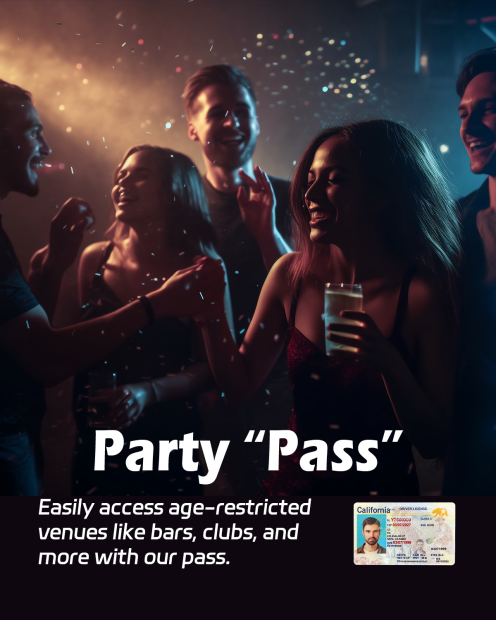A Real ID is a form of identification that adheres to certain federal standards set by the United States government. It is designed to enhance security and make it more difficult for individuals to fraudulently obtain identification. For those with a work – sponsored visa, obtaining a Real ID can be an important step for various activities such as air travel within the United States and accessing certain federal facilities.
Understanding the Basics of Real ID
The Real ID Act was passed in 2005 in response to the 9/11 Commission’s recommendations. It established minimum security standards for state – issued driver’s licenses and identification cards. A Real ID is distinguishable by a star in the upper right – hand corner of the card in most states. This star indicates that the card meets the federal requirements.
States have been gradually implementing the Real ID requirements, and as of a certain date, starting from October 1, 2020 (with some extensions due to the COVID – 19 pandemic), a Real ID or another acceptable form of identification will be required for domestic air travel and to enter certain federal buildings. Non – Real ID driver’s licenses and identification cards will still be valid for other purposes such as driving and local identification.

Eligibility for a Real ID with a Work – Sponsored Visa
Individuals with a work – sponsored visa are generally eligible to apply for a Real ID in the state where they are residing. However, it’s important to note that each state may have its own specific requirements in addition to the federal ones. In general, you must be lawfully present in the United States with your work – sponsored visa to be eligible.
Some states may require proof of residency in that particular state for a certain period of time. This could be demonstrated through utility bills, lease agreements, or other official documents that show your name and current address within the state.
Required Documents for Applying for a Real ID with a Work – Sponsored Visa
- Proof of Identity: You will need to provide a valid passport or other original documents that establish your identity. This could include a foreign passport with a valid work – sponsored visa stamp, or an I – 94 Arrival/Departure Record that verifies your lawful entry into the United States.
- Proof of Lawful Status: Your work – sponsored visa document, such as an Employment Authorization Document (EAD) or a visa stamp in your passport, is crucial to prove your lawful status in the country. Make sure these documents are up – to – date and valid at the time of application.
- Proof of Social Security Number (SSN): You may need to provide your Social Security card. If you do not have a Social Security number because you are not eligible for one, you may need to provide a letter from the Social Security Administration stating that you are not eligible.
- Proof of Residency: As mentioned earlier, you will need to present documents that prove your current state residency. This can be a recent utility bill (such as electricity, water, or gas), a lease agreement, or a bank statement with your name and address on it.
The Application Process
1. Research State Requirements: First, visit your state’s Department of Motor Vehicles (DMV) website. Each state has its own set of rules and procedures for Real ID applications. Find out the specific documents they require, any fees associated with the application, and whether you need to make an appointment.
2. Gather Documents: Collect all the necessary documents as per the state’s requirements. Make sure they are original or certified copies if required. Organize them in a file or folder for easy access during the application process.
3. Make an Appointment (if required): Many states now require appointments for Real ID applications to manage the flow of applicants and reduce wait times. Schedule an appointment at your local DMV office through their online system or by phone.
4. Visit the DMV: On the appointed day, arrive at the DMV office on time. Bring all your documents with you. A DMV representative will verify your documents, take your photo, and collect your fingerprints (in some states). You may also need to pay the application fee, which can vary by state but is typically in the range of $20 – $60 for a Real ID driver’s license or identification card.
5. Application Review and Processing: After you submit your application and all the required documents, the DMV will review your information. This may take some time, especially if there are any discrepancies or if further verification is needed. Once approved, you will be issued a temporary Real ID (if applicable) and your permanent Real ID will be mailed to you within a few weeks.
Common Problems and Solutions
Problem 1: Incomplete or Incorrect Documents
Sometimes, applicants may bring incomplete or incorrect documents. For example, they may have an expired visa or a utility bill that is not recent enough.
Solution: Thoroughly review the state’s document requirements well in advance. Make sure all your documents are valid and up – to – date. If you are unsure about a particular document, contact the DMV or a legal immigration advisor for clarification. If a document is expired, take steps to renew it as soon as possible. For residency proof, make sure the document is from within the last few months.
Problem 2: Difficulty in Obtaining a Social Security Number – related Document
Some work – sponsored visa holders may face challenges in obtaining the required Social Security number – related documents. For instance, if they are not eligible for a Social Security number but do not have the proper letter from the Social Security Administration.
Solution: Contact the Social Security Administration directly to inquire about the process of obtaining a letter stating ineligibility for a Social Security number. Provide them with all the necessary information and documentation related to your visa status. Keep copies of all communications with the Social Security Administration for your records. If you are eligible for a Social Security number but have not received the card yet, follow up with the agency to expedite the process or get a verification letter.
Problem 3: Long Wait Times at the DMV
DMV offices can be busy, especially during peak times, and applicants may experience long wait times even with an appointment.
Solution: Try to schedule your appointment during off – peak hours, such as early in the morning or late in the afternoon. Arrive at the DMV a few minutes early to complete any preliminary paperwork. You can also check the DMV’s website or social media pages for any updates on wait times or potential delays. Some states may offer online services for certain parts of the application process, which can help reduce in – person wait times.
Problem 4: Language Barriers
For non – English – speaking work – sponsored visa holders, understanding the application process and communicating with DMV staff can be a challenge.
Solution: Many DMV offices offer language assistance services. You can call the DMV in advance to inquire about interpreters or translated application materials. Some states have multilingual staff or can provide translated brochures and forms. You can also bring a friend or family member who is fluent in English to assist you during the application process.
Problem 5: Lost or Stolen Documents
If any of the required documents, such as a passport or Social Security card, are lost or stolen before or during the application process, it can cause significant delays.
Solution: If your passport is lost or stolen, contact your country’s embassy or consulate in the United States immediately to start the process of obtaining a replacement. For a lost Social Security card, you can apply for a replacement through the Social Security Administration’s website. Make sure to report the loss or theft to the appropriate authorities as well. Keep all the documentation related to the loss and the replacement process with you when you resume the Real ID application.
Problem 6: Discrepancies in Name or Information
There may be discrepancies in the name or other information on different documents. For example, your name on your passport may be slightly different from the name on your lease agreement.
Solution: Gather any supporting documents that can explain the discrepancy, such as a marriage certificate if your name has changed due to marriage. Contact the relevant agencies (such as the DMV, passport office, or the entity that issued the other document) to inquire about the process of correcting or reconciling the information. In some cases, you may need to obtain an affidavit or other legal document to verify the correct information.
Problem 7: Change of Residency During the Application Process
If you move to a different state while your Real ID application is in progress, it can complicate matters.
Solution: Contact the DMV of the state where you originally applied to inform them of your change of address. They may provide you with instructions on how to update your application. In some cases, you may need to start the application process anew in the new state, but you can use the documents you have already gathered and any previous application records to support your new application. Make sure to update your address with all relevant agencies, including the Social Security Administration and your visa – sponsoring employer.
Fake ID Pricing
unit price: $109
| Order Quantity | Price Per Card |
|---|---|
| 2-3 | $89 |
| 4-9 | $69 |
| 10+ | $66 |


